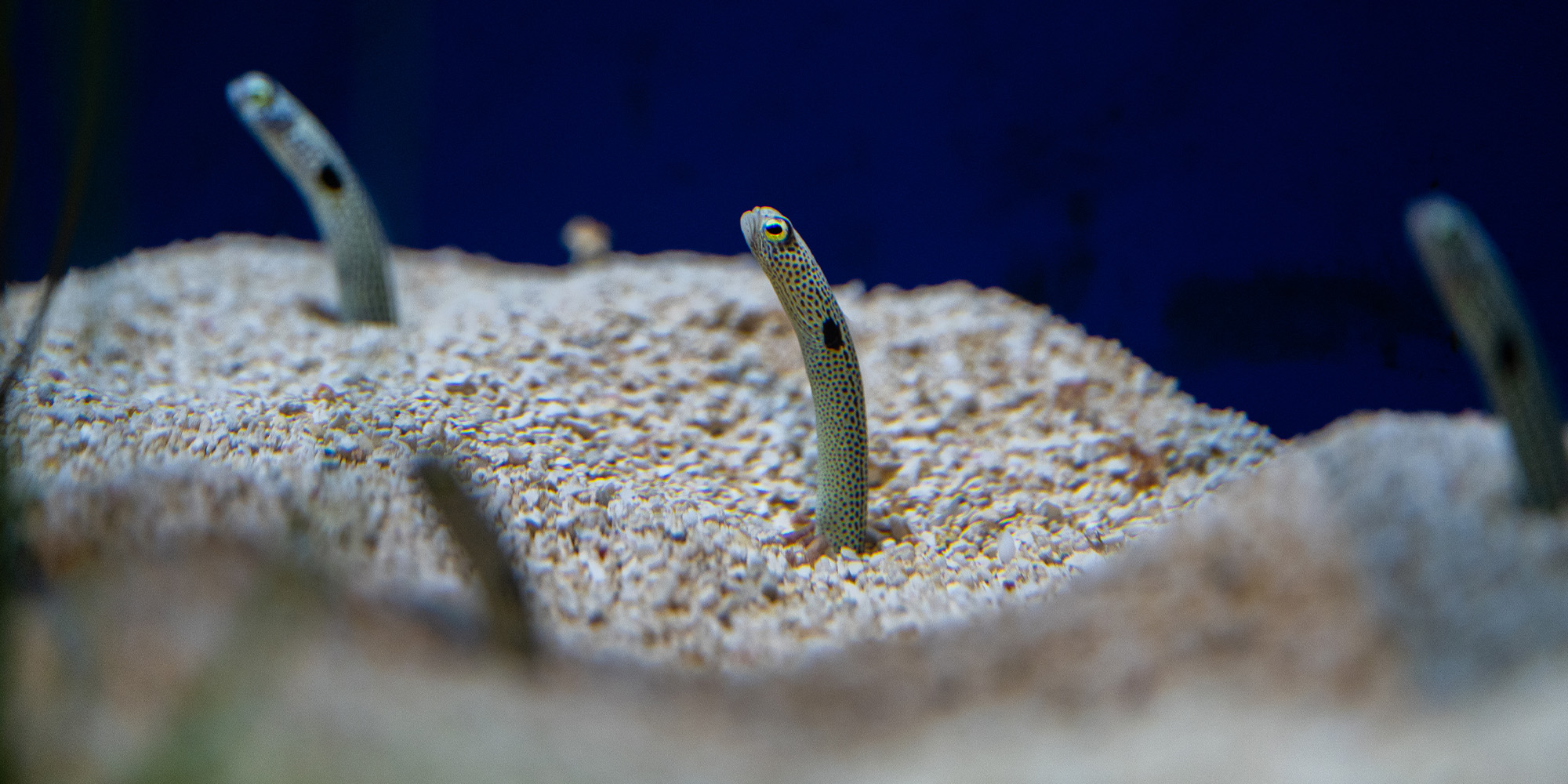A swaying colony of spotted garden eels could easily be mistaken for plants. These animals extend their bodies out of individual burrows to find tiny zooplankton to eat, but if they spot danger, the eels can pull their bodies completely into their burrows to hide.
Classification
| CLASS: | Actinopterygii |
| ORDER: | Aulopiformes |
| FAMILY: | Congridae |
| GENUS: | Heteroconger |
| SPECIES: | hassi |
Habitat & Range
They live on the sandy flats that border coral reefs at depths of 23’ – 150’ (7–45m). They can also be found in areas dense with seagrass. They dig a burrow into the sandy sea bottom using their pointed tail. When the burrow is deep enough they use their dorsal fin to push the sand out of the burrow. Slime that they secrete from their skin cements the burrow walls so that the burrow will not collapse.
Spotted garden eels live in the warm parts of the Pacific Ocean and the Red Sea.
Location


Adaptations
- It’s pointed tail helps dig a burrow.
- The dorsal fin is used to push sand out of the burrow.
- When threatened they will retreat into their burrow.
- Good eyesight allows them to spot food and predators.
- For spotted garden eels living in areas dense with seagrass the seagrass acts as camouflage allowing them to hide in plain sight.
Physical Description
- They resemble a worm.
- They grow up to 16” (40cm) long
- Their body diameter is .5” (1.3cm).
- Adults have a white body covered in small black spots with three large black patches on their body.
- Juveniles are entirely black.
- They have large yellow eyes.
- They have an upturned mouth.
- They are sexually dimorphic, meaning males and females look different. The male is much larger than the female and it’s jaw sticks out further.
Diet
What Does It Eat?
In the wild:
They eat tiny planktonic animals that float by them in the water current.
At the zoo:
They eat flake food and hatch brine shrimp.

Social Organization
Each spotted garden eel lives in their own burrow in a colony of hundreds of eels.
Life Cycle
Spotted garden eels may leave their original burrow to move closer to mates. While mating garden eels entwine their upper halves together while their tails remain in their individual burrows. They are pelagic spawners which means the female releases fertilized eggs into the water. The eggs float until they hatch. Once the juvenile garden eels are large enough they swim down and make their own burrows.












